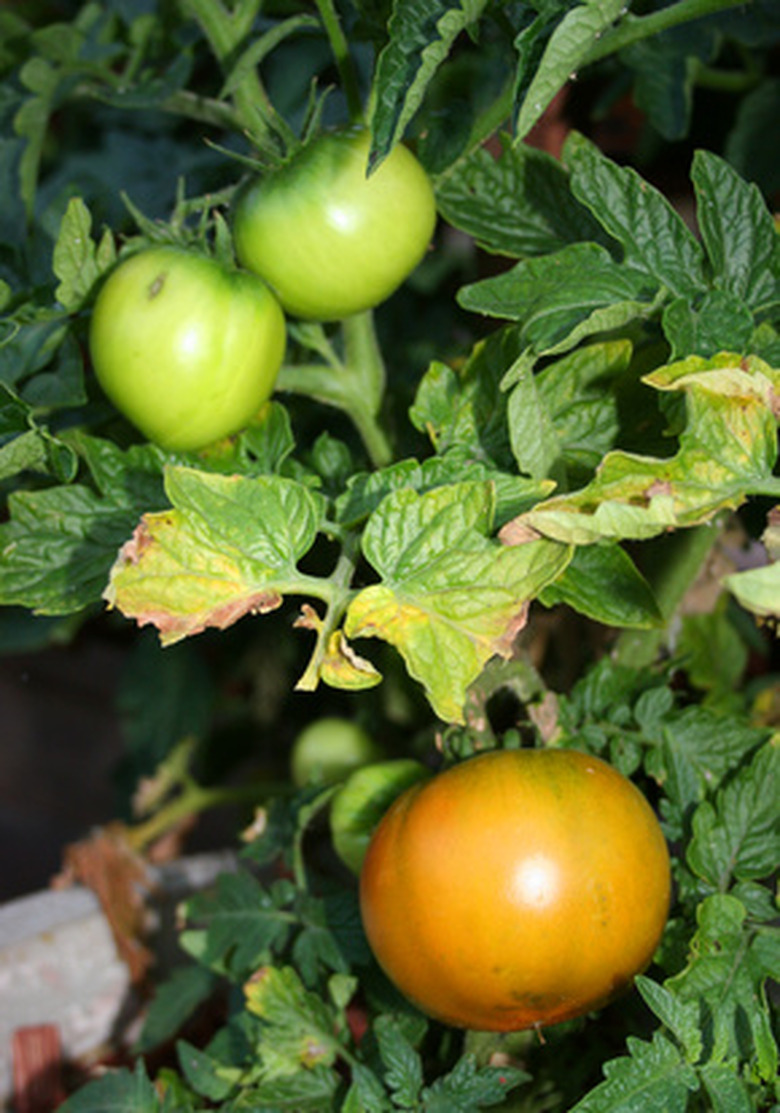How Can I Stop Bugs From Eating My Tomato Plants?
Things Needed
- Spinosad
- Pyrethrum powder
- Tomato plants
- Jar of soapy water
- Garden gloves
- Flashlight
Like any fruit or vegetable grown outdoors, the tomato plant is susceptible to damage from insect pests. To control bugs on tomato plants, carefully inspect plants for eggs or insect damage before purchase. Keep the garden free of weeds and old plant material where bugs can hide. Also, space plants properly so insects cannot move from one plant to another without being seen by a predator. The two main types of pests that affect tomato plants are a variety of worms and stink bugs. The most common stink bug is the Leaf-Footed Bug.
Step 1
Identify what bugs are eating the tomato plants. You may need to go outside at night after the sun sets with a flashlight or in the morning and look at the tomato plants to see what insects are bothering them. Some large worms, such as the Tomato Hornworm, do most of their damage at night. Stink bugs that damage tomatoes by piercing the skin and causing a mottled appearance are active all day, but congregate at dawn. Look for bugs under the leaves as well as along the stems and under the fruit. Also, scratch the soil surface around the bottom of the plants to see if any brown or green worms are hiding in the soil.
- Like any fruit or vegetable grown outdoors, the tomato plant is susceptible to damage from insect pests.
- Also, scratch the soil surface around the bottom of the plants to see if any brown or green worms are hiding in the soil.
Step 2
Wearing garden gloves to protect your hands, pick off the bugs you see on the plants and put them in a jar of water with a little dish soap added. The dish soap coats their wings so they cannot fly out of the jar or coffee can. The best time for handpicking bugs is the early morning while there is still dew on the plants. Most garden insects cannot fly until the dew dries on their wings. A pair of garden gloves protects your hands.
Step 3
Spray the tomato plants with a product containing Spinosad, which is a natural pesticide derived from organic ingredients. Spray every five days, or as instructed on the container label, until control is complete. You can find pesticides containing Spinosad wherever organic pest control products are found. Spinosad will eliminate problems with beetles, worms and caterpillars.
- Wearing garden gloves to protect your hands, pick off the bugs you see on the plants and put them in a jar of water with a little dish soap added.
Step 4
Dust the tomatoes and plants with pyrethrum powder once every three to five days or as recommended on the container label. The amount and number of applications will depend on the specific product and level of insect infestation, so follow directions carefully. Pyrethrum powder must have contact with the offending insect to work, so applications in the morning when insects are less active is important. Pyrethrum powder controls stink bugs and especially the Leaf-Footed Bug as well as most other garden pests. It is toxic to bees, so use caution when dusting around flowers.
Warning
Take all safety precautions necessary when working with pesticides.
